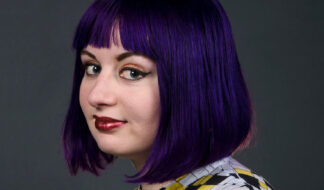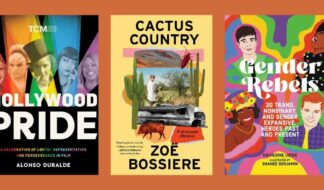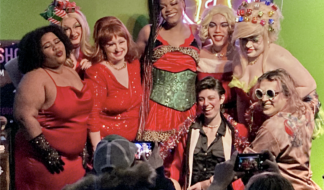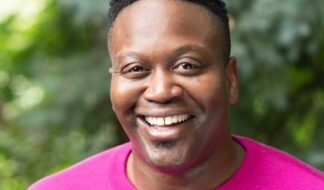How a Community of LGBTQ+ Artists in Ferndale Is Fostering Connection Through Creative Expression
The Detroit Queer Sketch Series is liberating queer models and artists alike
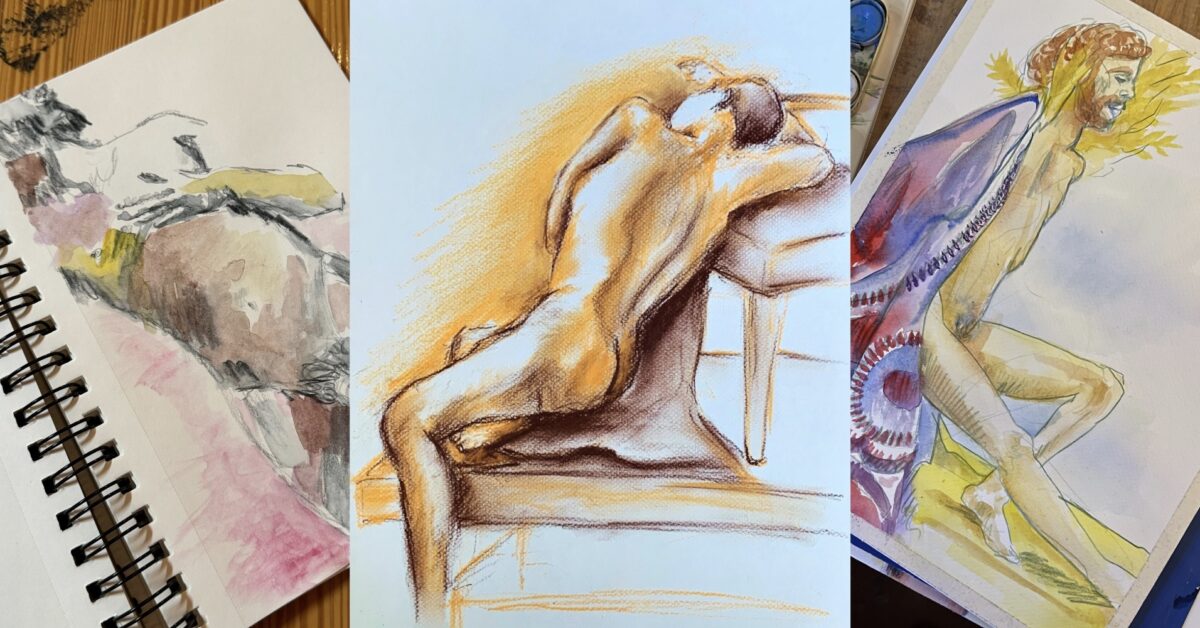
The first time I drew, I was the only gay boy in the room. Oftentimes, I did it alone, a scared kid afraid of what people would think of me — drawing wasn’t a sport, and weren’t boys supposed to play rough? Now, I almost can’t believe it: I regularly draw in a room spilling over with LGBTQ+ people and allies, a space welcoming and supportive to all people and their level of artistic talent.
I’m talking about my experience when I drop in to the Detroit Queer Sketch Series, which I was grateful to find in 2023 after a loss of community spaces during the pandemic shutdown. At the time, I was emerging from significant transition and still feeling the impact of Covid's upheaval on both the world and my life.
Art’s been a trusted friend along the way, even before I grew up. Many years earlier, as a closeted gay boy in the early 1990s trying to make sense of who he was, simply putting marks on a clean page brought me comfort and escapism on that journey and eased me into a greater understanding of myself.
I couldn’t stop drawing then. I would sketch Disney characters and cartoons on the living room floor while watching Mr. Dressup at his easel on TV. My passion evolved into still-life charcoal drawings and then portraits, and with encouragement from my wonderful teacher, Sharon Dillenbeck, I began selling prints at an art festival in my hometown of Canton and teaching other kids how to get Ursula’s tentacles just right.
Those hours spent exploring the potential of a blank sheet of paper were invaluable. In large part, I survived some of my toughest years as a teenager — my parents’ divorce, my coming out, thoughts of suicide — because of them. In high school, after a fight between my parents that left me afraid and uncertain, another great art teacher sensed something was off about me and suggested I skip lunch in the school cafeteria. She found me a comfortable spot in her back art room, put a big piece of paper in front of me and, to this day, I couldn’t tell you if more charcoal or more tears made it onto the page.
I was too young then to know that other queer boys needed art like I did — were we all grieving what society told us we had to be but were not? A recent article in The New York Times called “With Grief By Their Side,” featuring artists reflecting on how creative expression can be a balm, crystalized for me the role of art during my young years and even now. “Grief evolves, and how can people return to their essence and return to who they are? It’s because of art,” says filmmaker Lila Avilés in the piece. Photographer Justin Hardiman added, “Art is like a therapy. We go into the studio or go outside and talk to people, and create. The grief is not going to get easier, but it helps to have somebody to help you make it through because there’s a lot to unpack.”
I think my own grief related to the pandemic and family brought me to the Detroit Queer Sketch Series, and perhaps that’s why many of the queer adults come every third Thursday (and now also first Monday) to Ferndale, when a community of queer artists and allies gather around a model with their sketch pads and chosen medium to partake in figure drawing.
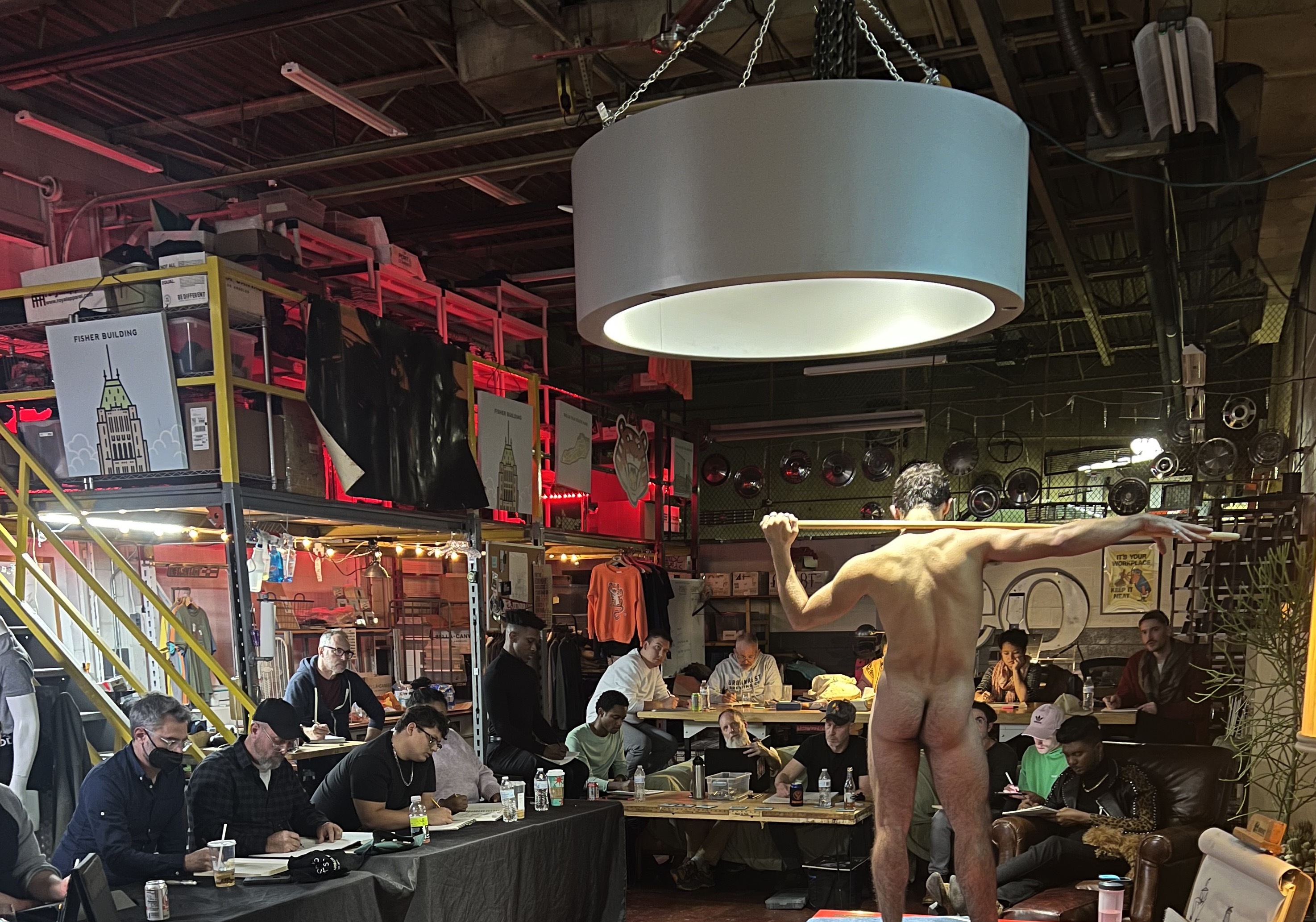
The love of art brings us together, but it’s hard to argue that at least some shared feelings in our collective queer experience keep us coming back — art really is a powerful form of healing. As an adult, I now know I’m not the only gay person who leaned desperately on creative expression. Case in point — on his website, co-founder James Shanek (his last name appears in most places as Staycation, the name he uses to promote his events) writes about his motivation to create art in a way that probably feels familiar to queer artists, explaining that creating is the result of “growing up in a world that wasn’t designed for him — years of trying to fit into a mold that he was never designed to fit [and] letting go of societal expectations.”
During the distressing shelter-in-place era, when I turned back to art as relief from an overwhelming sense of world-weariness, so did Shanek, who called painting his “pandemic therapy.” “As things loosened up, I was having models come for my paintings,” he recalls, which, as more people expressed in a shared space for drawing models, led him to Chris Gorski. With his own spacious industrial spot that serves as a warehouse and office for his design and apparel brand that specializes in promoting Detroit (aptly, it’s called Detroit GT), Gorski opened up his doors to Shanek’s idea, giving Detroit Queer Sketch Series a home on Wolcott Street in Ferndale. The first class in 2022 wasn’t at all what some people who showed up thought it would be.
“When we first started doing it, we got a lot of voyeurs because there was a nude male and that was the focus,” Gorski says. “But now that the novelty has worn off, people come and they see, oh, it's a naked person, and for the first 15 minutes it's tantalizing and exciting and then people are in the zone. People are actually drawing.”
For Timothy Yang, who lives in Hazel Park, the Detroit Queer Sketch Series has been entirely about the feeling of creating, and, as someone who’s “usually reserved in new spaces,” he’s even surprised himself, knowing there he feels “welcome and at ease.”
“In the past, I've gone to a few drawing classes hosted by other organizations that got the job done but there wasn't much camaraderie going on; sometimes the regulars came off as pretentious or entitled so being new didn't help my anxiety,” says Yang, who has a BFA in illustration from the College for Creative Studies.
Yang first attended this year, in March, and is reconnecting to artistic expression in a way he hasn’t in some time — projects are piling up, including a backlog of personal illustrations he’s working on, but the series “has definitely reignited a spark that’s been out,” he says.
“Seeing how different everyone's results are is so inspiring,” Yang adds. “I can't say I'm finishing everything immediately, but I'm definitely moving forward in ways I haven't felt since last summer.”
In Michigan, finding a nude model to draw in a professional setting isn’t challenging — this option is obviously not unheard of at most major art studios — but what makes the Detroit Queer Sketch Series special is how our community is capturing, through artistic expression, our actual community, whether that’s a twink or a trans man. “Being queer has definitely made it easier as well since it's just another thing bringing most of us together on top of wanting to draw,” Yang says. “I see familiar faces at every session and I've noticed myself opening up a little more. I let people see the mistakes I make when drawing and by showing my creative process, I'm also letting my guard down. I feel safe and not judged.”

Gorski didn’t realize until well after this series launched that there’s a national trend of similar drawing events. He recently went to a sketch drop-in in New York at Club Cumming, actor Alan Cumming’s bar, where he said people were packed into a space smaller than the Detroit GT warehouse. “There were younger people, there were queer people, there were straight people, there were older people, there were professors, there were young, budding students,” he recalls. “What I realized is that this is happening everywhere and we're doing a good job and that we just need to expand it and keep going and make it even better,” he says. He took some notes. Club Cumming played club music, a reminder as to why they don’t — at the Detroit Queer Sketch Series the music vibes are mellow. “The one thing that I did catch at the end, they gave away prizes. They let the model choose which drawing they liked, and I really liked that aspect. So we kind of adapted that into our sketch session.”
“The cool thing about having the model choose is that the model doesn't always choose what is the best piece of art,” Shanek adds. “They're choosing what they like the most. We had a guy who just didn't want to put his artwork out there because he was just messing around. He was like, ‘I'm not serious about this. I don't want to do it.’ So we encouraged him to do it. He did put his piece out, and then it ended up being one of the pieces picked. So there's no such thing as bad art. There's just art that speaks to different people.”
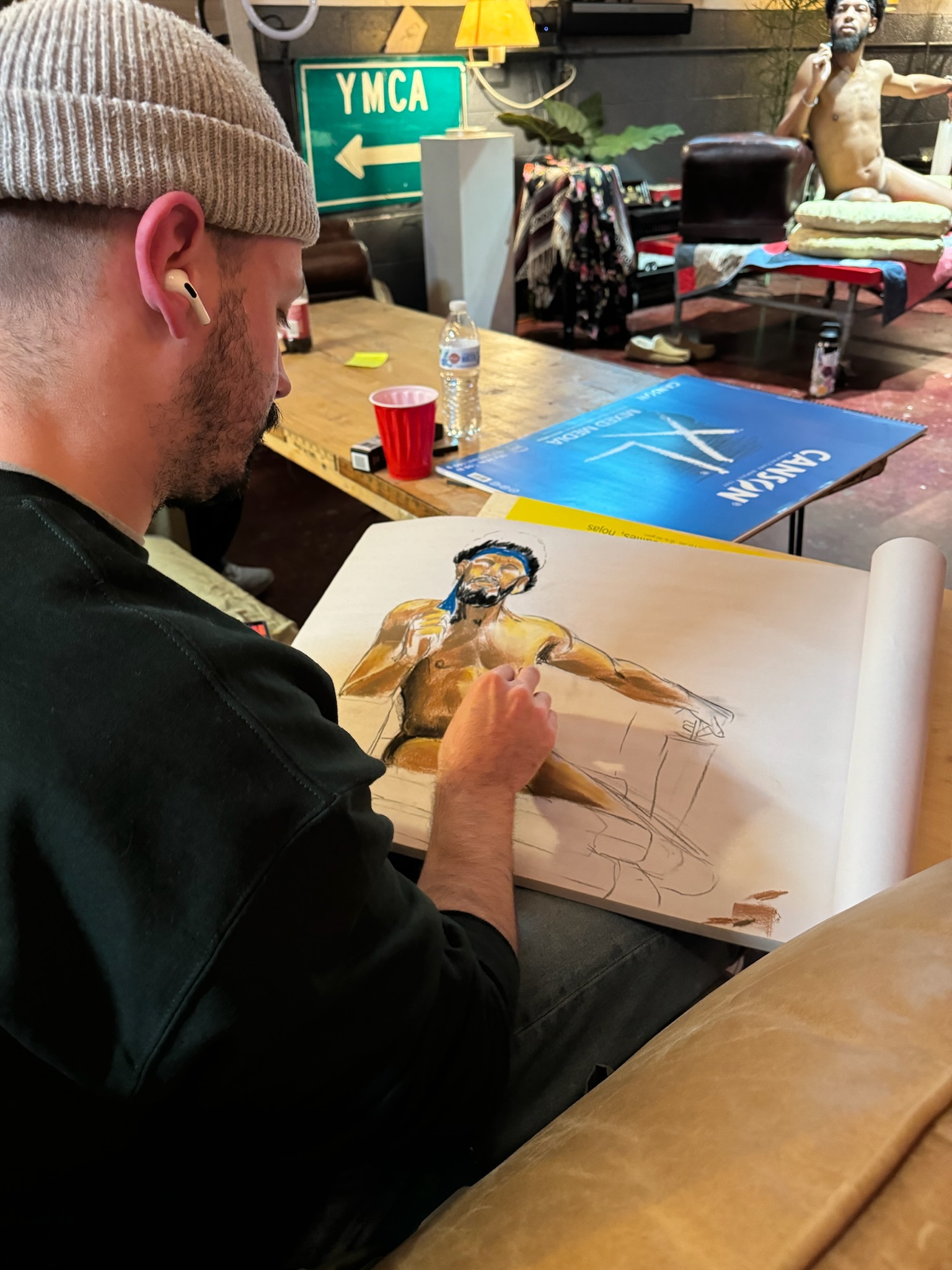
Two years in, the sketch series has grown in popularity so much that on Thursdays the crowd is so big artists end up sitting in the mezzanine upstairs or on the stairs themselves. “We were regularly basically bursting at the seams and we wanted it to be a comfortable experience for people to draw,” Shanek says. Given the turnout, Gorski and Shanek decided to add a second sketch day on the first Monday of every month. While Thursday’s models remain men, the Monday addition is open to models who are women and drag queens.
“We always wanted to make sure that it was all body shapes, all sizes,” says Gorski. “So we've actually heard from people like, ‘I really appreciate you having white, black, Latin, Asian, and you have bears and twinks.’”
To commemorate their two-year event anniversary in July, that month both Gorski and Shanek will be modeling. Shanek, who has modeled before, says that models often tell him afterward how “liberating” it feels to be naked on the centerstage platform, celebrating their body as a group of artists capture what they see. I speak from experience when I say that the Detroit Queer Sketch Series is more than just a creative outlet. In a world that marginalizes and misunderstands us, this space, even for the artist, offers a sanctuary where we can express ourselves freely and authentically. I’m no longer the only gay boy in the room. When I go, I’m part of a thriving community of LGBTQ+ artists. That has been transformative and a testament to the power of art to heal, connect and empower.


